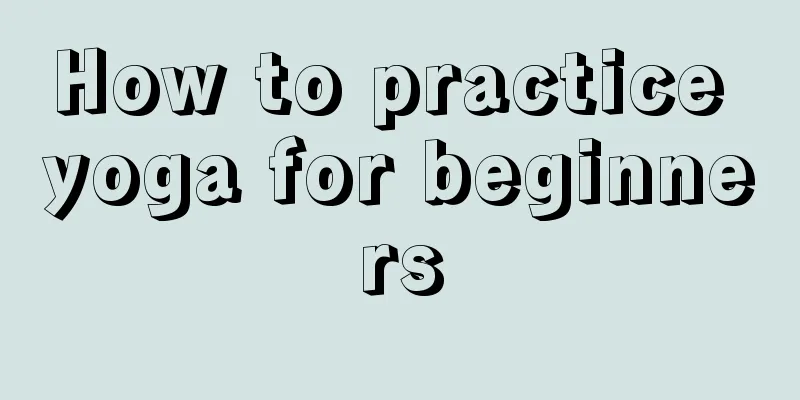Swimming Basics

|
Swimming is a good fitness activity. It not only exercises the body, but also has a good effect of shaping and losing weight. In the summer, many people like to swim, and it also has the effect of relieving heat and cooling down. For novices, they must learn some introductory knowledge when swimming to avoid some unexpected situations, such as being familiar with water, etc. Let’s take a look at this aspect. Swimming Basics 1. Be familiar with water People tend to get nervous in the dark, so you have to eliminate your fear of water, become familiar with the underwater environment, and eliminate tension and panic. Once you have a certain feeling, you will be able to eliminate your fear of water. Generally, you should hold your breath and exhale first, then curl up and float, feeling the buoyancy of the water. ①Hold your breath and exhale Most people only know how to hold their breath, using all their body's strength on their face and focusing their attention on their face, so their movements will also be distorted. The first step is to practice holding your breath in shallow water. Every time you feel like you can’t hold it anymore, slowly exhale. Be sure to start slowly and keep trying different exhalation speeds. At the same time, relax your body and try to open your eyes underwater. It is best to have swimming goggles. ②Practice of drifting Floating is an important foundation for learning to swim. You can observe in the water that those who swim well have their bodies basically straight, like a horizontally gliding torpedo. As for those beginners who swim slowly, their bodies are almost without exception tilted, with a large angle with the horizontal plane. One of the main reasons for this phenomenon is that they always try to hold their heads up. The human head is very heavy. Once the head is out of water, the body has to bear a greater weight. And if you tilt your head back, your body will naturally sink. So to learn swimming you must first learn how to float prone. The main reason for not being able to float is tension. Relax your whole body, take a deep breath, put your head in the water and look at the bottom of the pool, then lightly push off the bottom of the pool with your feet to float, and relax your whole body. There are two ways of drifting: facing upward and facing downward. The first thing you need to learn is facing downward, with your back facing the sky. The human body can float in water, but beginners often lack experience in this. Therefore, once the head is in the water and the feet are not on the ground, panic will occur immediately, which is exactly the biggest taboo for people who fall into the water! In order to overcome this fear, before learning to float, you can do immersion exercises first - in shallow water, bend down and immerse your head in the water, exhale slowly, count silently, and see how long you can last. After practicing this repeatedly for a period of time, you will no longer be afraid of water getting into your head, and the time you can hold your breath will gradually increase. ③Floating in a group In shallow water, first take a breath and hold it, then relax your head and put it in the water (beginners are usually afraid, but in fact, as long as you hold your breath there will be no problem). Lift your feet off the bottom of the pool and hug your knees with your hands (just like a diver tumbling in the air). At the same time, try to get your head close to your knees. If you look at you from above, only your back will be above the water. After completing the floating action, take your hands off your knees, stretch your legs down and stand up, while your hands push the water forward and lift your head out of the water. It’s best to have someone demonstrate it to you live, and then you can practice it a few times, or you can just look for a related video. 2. Standing in water Because when swimming, people have to lie horizontally on the water. If they don't know how to stand, they will feel insecure and easily panic. When you are a beginner, you can take a float or a swimming ring, climb onto the wall of the swimming pool, bury your head in the water, stretch your arms forward, straighten your body, and slide forward. When you want to stand up, pull your legs together and huddle your body. Since the density of human legs is relatively large, the body is naturally vertical. At this time, stretch your legs downward and you can step on the bottom of the pool to stand. This exercise is designed to increase your sense of safety in the water. 3. Sliding practice Once you have learned how to hold your breath and stand in water, you can practice gliding without any auxiliary equipment. The posture is the same as standing in water. Stack your hands and stretch them above your head. Use force to climb the pool wall. Make sure your body is straight, bury your head in the water, and slide forward. Without making any body movements, the longer the sliding time and the farther the distance, the better. The goal is to get a feel for moving forward in the water. In shallow water, stand with your back against the pool wall, bend over, stretch your arms forward, bury your head in the water, then lift one leg and push the pool wall backward to flatten your body and slide forward. Remember to keep your head submerged as much as possible so that your body can lie flat. Try to relax and don't be nervous, and gradually feel that the water can float your body. After losing speed, the legs will gradually sink, and then slowly reel in the legs and stand up. In this way, you can gradually overcome tension and develop hydrophilicity. After practicing it several times, you will have confidence and feel for drifting. You may sway from side to side while gliding, but don't be nervous. You will get used to balancing in the water after practicing a few times. After you have mastered the above exercises, you can add frog kick exercises while gliding. 4. Break down the action Because it is relatively easy for people to perform movements with their hands, we should train our legs first. That is, practice the movements while gliding. To increase your practice time, use auxiliary equipment to keep your head above water. I won’t go into the specifics of the movements, there are many ways to get the correct posture. However, at the beginning, the movements must be done one by one, and it is forbidden to do them continuously. Maintain the gliding posture after each movement. Keep practicing until each movement can make the body slide forward a certain effective distance. When the body no longer slides forward, do the second movement. Generally speaking, an expert can slide more than 5 meters in one breaststroke leg movement. 5. Breaststroke leg clamp The breaststroke kick and leg clamp action is broken down into the following steps: ① Closing: Stretch your legs straight and lie flat, then start to close your legs and bend your knees. Do not open your knees too far apart during the process. Be careful not to pull your thighs in too much when pulling your legs in. Try to pull your calves in as much as possible, and keep your heels as close to your buttocks as possible. ② Turn over: turn over the sole of the foot, curl the toes, and face the inner side of the sole of the foot to the water. The main driving force for breaststroke is the legs, which can maintain the propulsion force on the water and be efficient when kicking out. ③ Kick: kick your legs. After pulling in your legs, push them downward and lower behind your body (note that the direction of the push is downward and backward, not horizontally), and open your legs into an "eight" shape. The knees should be shoulder width or slightly wider. ④ Clamp: clamp legs. Bring your legs together and straighten them. The leg kicking and leg squeezing movements should be quick. Basically, you start squeezing your legs together while you kick them. Most of the time it is because the thighs are too retracted, the waist is arched and the buttocks are raised, the forward momentum is blocked by the thighs, and the posture is ugly. The calves should be hidden behind the thighs and the legs should be slowly retracted to reduce resistance. Or if the sole of the foot is not turned over, use the toes to push the water. Generally, beginners are not used to the foot-flipping movement, so this movement needs to be strengthened. After you become proficient in this exercise, you can add frog hand exercises. 6. Hand movements The hand movements must be practiced on shore before going into the water, otherwise the movements will easily become deformed. Take breaststroke as an example: hands-feet-hands-feet-the movements must be done in groups, and after each group is completed, the body keeps in a gliding state. |
<<: Why do I gain weight after exercising?
Recommend
How to exercise thigh muscles
In real life, everyone wants to have perfect body...
7 ways to turn a bamboo pole into a muscular man
1. Arrange the amount of exercise reasonably The ...
Can jumping rope every day help you lose weight?
As a successful precedent for healthy weight loss...
How to increase height by playing basketball?
Boys all love to play basketball. Playing basketb...
What are some simple and easy-to-learn yoga moves?
Yoga movements are relatively simple and easy to ...
How long is the appropriate duration for each fitness exercise?
We all have a common understanding that if people...
What are the benefits of long-term running?
Many people like running and they think it is a v...
What exercises can strengthen the muscles of the whole body?
In real life, many people want to have a good bod...
Back fitness training method
I believe that many friends now have back health ...
Which is better, skipping rope or running?
Exercise is the best way to lose weight. There ar...
Do sit-ups affect the prostate?
Have you all heard of sit-ups? Have you all heard...
Can patients with chronic kidney disease practice yoga?
Nowadays, with the continuous improvement of peop...
Does doing sit-ups at night help lose weight?
Sit-ups are an exercise we do very often. They ca...
What are the most effective ways to train chest muscles with dumbbells?
In life, many of our friends want to do fitness t...
Can I jog during my period?
Many women always experience pain, distension, an...









